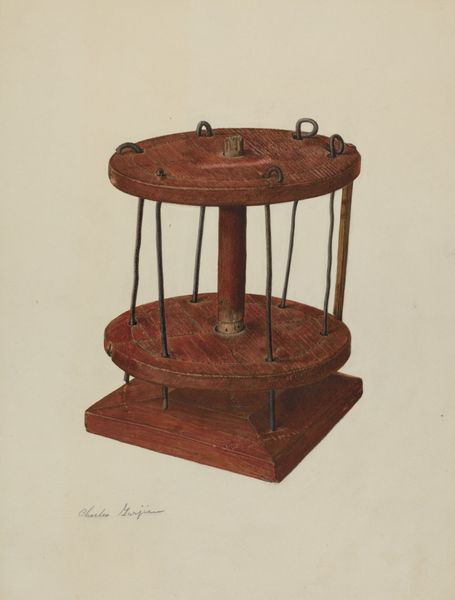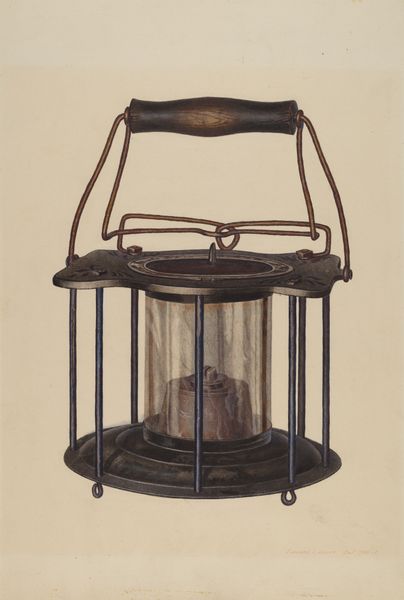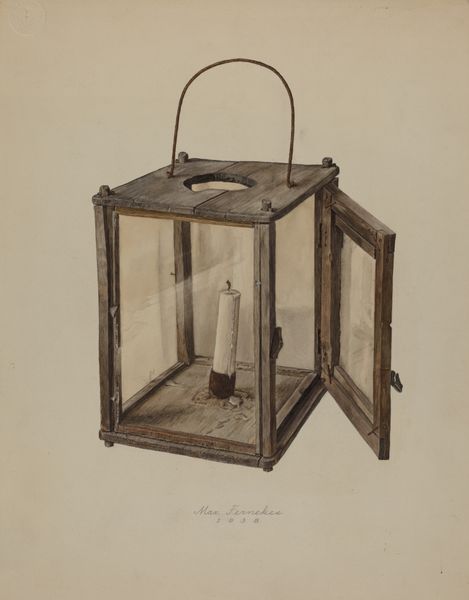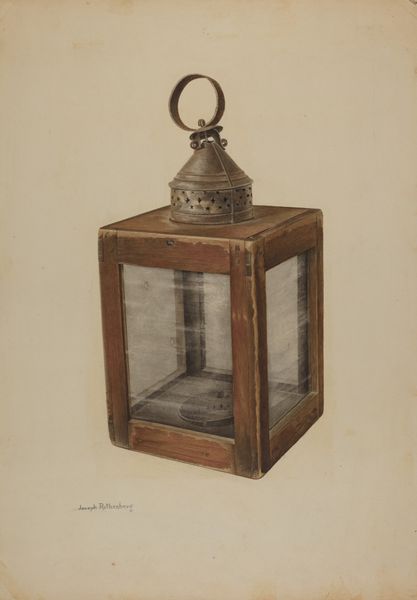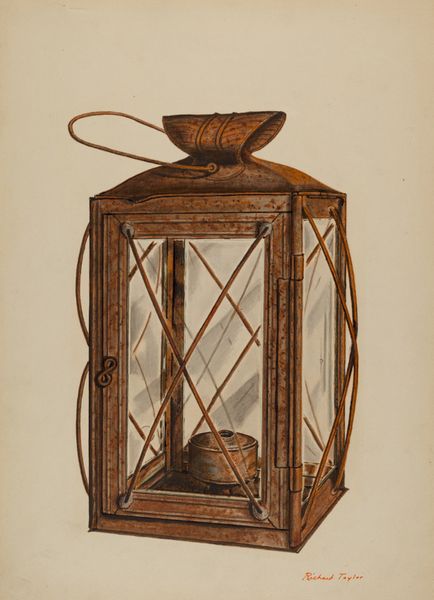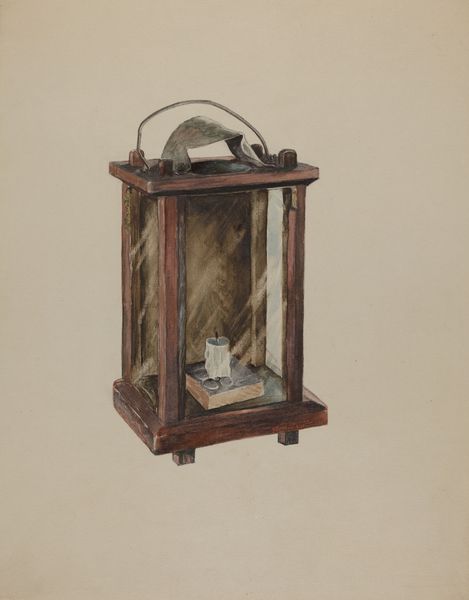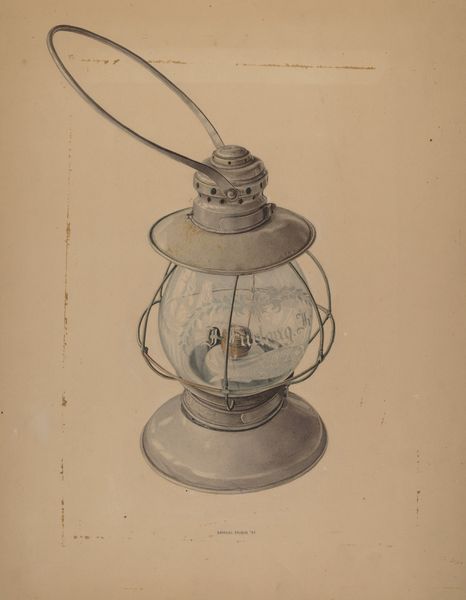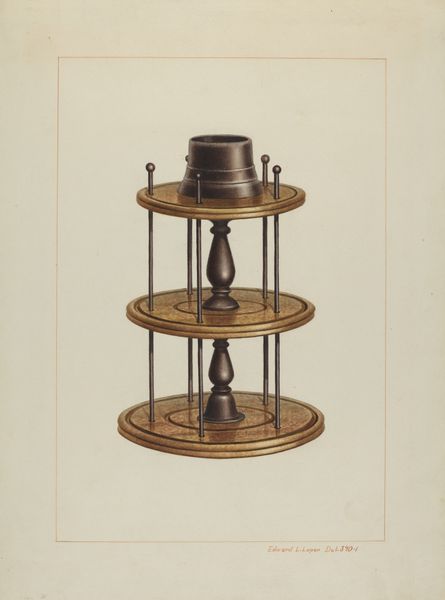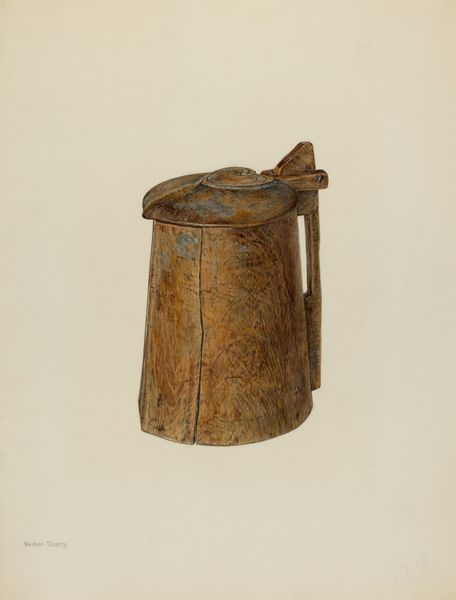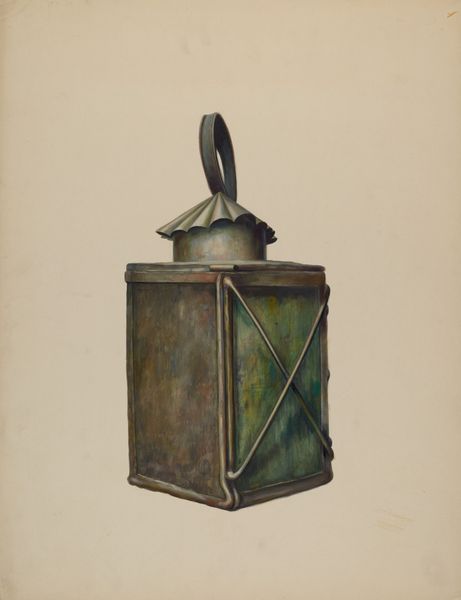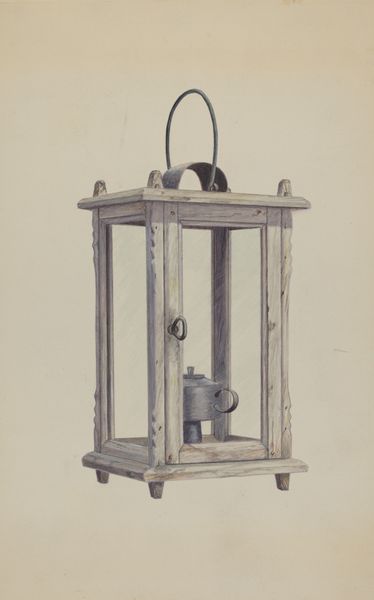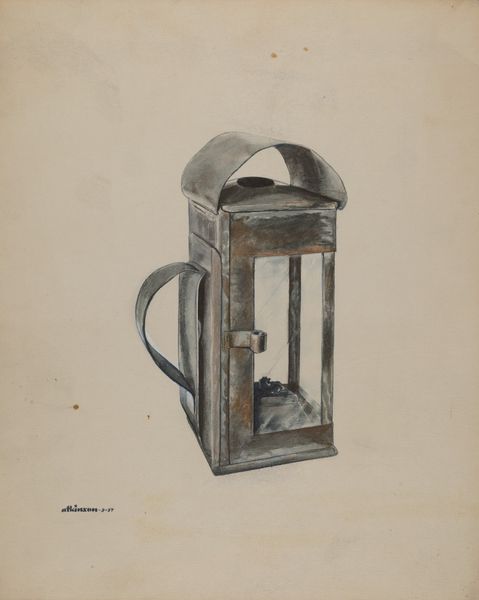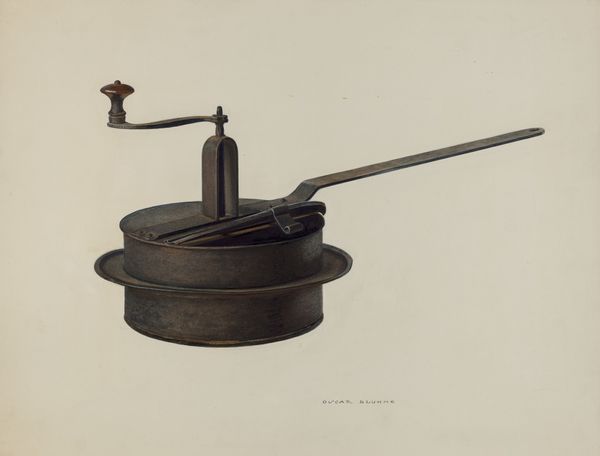
drawing, watercolor
#
drawing
#
watercolor
#
watercolour illustration
#
realism
Dimensions: overall: 31.5 x 44.8 cm (12 3/8 x 17 5/8 in.) Original IAD Object: 5 7/8" high; 7 1/2" in diameter
Copyright: National Gallery of Art: CC0 1.0
Curator: Before us is Lester Kausch's "Combined Stove and Lantern," a watercolor and drawing likely created around 1940. It strikes me as an intriguing intersection of domesticity and utility. Editor: The first thing that hits me is the utilitarian feel – it looks incredibly functional. Almost like a piece of equipment from an early camping trip. Curator: It really speaks to the resourcefulness of the era. Kausch highlights how everyday objects can be multifaceted. In the context of the time, coming out of the Great Depression, such items become not only practical but a reflection of the struggles of individuals in an unstable society. Editor: Absolutely, the combination is the key. What materials do we think are actually represented? The rendering suggests steel for the frame, but maybe the core where fuel is contained is glass? Curator: Given the period, it's probable that materials like enameled steel or iron, and yes, likely heat-resistant glass, would have been central to its construction. But to bring that back to context, it's intriguing how an ostensibly simple device embodies societal resilience amidst resource constraints. Editor: There's a certain starkness to the object too. It is completely stripped down, all utility. There are decorative details at the top. The drawing has realism and captures the craft aesthetic perfectly. Curator: Precisely! The artistry here isn't merely representational but reflective of a time when practicality reigned. We see the confluence of design responding to necessity. The ability to cook and have light, combined, becomes this embodiment of surviving a world changed. Editor: It really shows that attention to detail wasn't reserved only for decorative fine art. The very fact someone dedicated their time to meticulously crafting, using their artistry to highlight functional material like steel, iron, or even glass for common use is a testament to design’s presence in even the most mundane aspects of everyday life. It is art for the everyday, almost. Curator: Looking at the work as a commentary, then, it speaks about a desire to create, to problem-solve, and ultimately, to sustain. And the stove-lantern symbolizes resilience, adaptation, and ultimately survival amid whatever turmoil or instability defined that time period. Editor: The materiality of its design suggests it was built to last, designed for years of consistent usage, highlighting quality craftsmanship as a necessity for all. It's a powerful reminder about respecting the objects and labor that shape our lives, particularly the material and process during production.
Comments
No comments
Be the first to comment and join the conversation on the ultimate creative platform.
